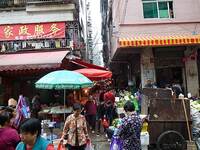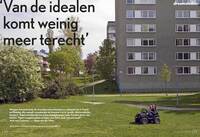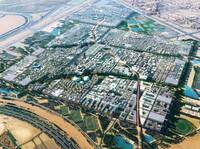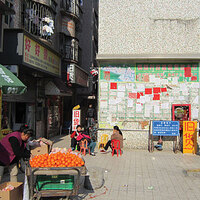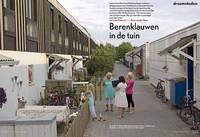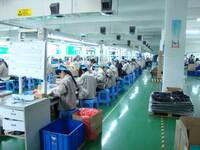Living in Shenzhen: attractive for creatives?
Article by Marco Bontje
Like many cities across the globe, Shenzhen is attempting to redevelop itself as a ‘creative city’. This policy concept can mean different things to different people. Strategies aiming at becoming a ‘creative city’ refer to attracting and developing cultural and creative industries like architecture, design, media, games, advertising, and of course, the arts. In this sense, creativity is often combined with affiliated concepts like innovation or knowledge-intensive business. But a ‘creative city’ is also often associated with having many cultural venues (museums, theatres, galleries, (...)
’Van de idealen komt weinig meer terecht’
Droomstreden
Article by Joris van Casteren
Nergens functioneerde de Zweedse welvaartsstaat zo volmaakt als in Tensta en Rinkeby. Als vanzelf veranderden de bewoners er in ’goede, democratische burgers’. Tegenwoordig zijn het achterstandsbuurten waar Zweden liever niet komen. ’Pippi Langslet zeiden ze tegen me! Dat is toch niet normaal?’
Article by Joris van Casteren
Real-world testing ground
EU Export
article by Rachel Keeton
BERLIN (DE) — In a new series, the International New Town Institute (INTI) presents the exportation of European models (urban planning, landscape architecture, social housing, water management, branding tools and technology) to various corners of the world. The influence of German multinational Siemens in the development of ecocity Masdar is the focus of this first instalment.
article by Rachel Keeton
A Proposal for Inclusive Redevelopment in Shenzhen. Needed: An Intermediate Planning Tool
Article by Andrew Reynolds
Shenzhen’s planning system has been extraordinarily successful in promoting economic growth, focusing on generating land development and seeking regional and global investment. It has resulted in the construction of many large urban projects across the city – the ‘hi tech centers’, ‘creative clusters’ and ‘new iconic CBDs’. Many of them are designed by Western architecture offices, ranging from the Qinghai water city and OMA’s new Stock Exchange to the development of multiple new Central Business Districts. Urban planning has been an effective tool in rapidly expanding the city, (...)
The Openheid State. From closed to open society in Cape Town
Article by Michelle Provoost
It is hard to conceive of a country where contemporary city planning has had a more negative impact on society than in South Africa. In this country, the ‘makeable’ world and social engineering were so ‘successful’ thanks to the apartheid regime that the potential of city planning to shape society has been proven beyond a shadow of a doubt. In Cape Town, apartheid is set in stone and poured in concrete.
Lost in translation
New town narratives
column by Rachel Keeton
Parisian banlieues such as Clichy-sous-Bois, Bondy and Corbeil-Essonnes have known their fair share of notoriety in the last decade. Second- and third-generation immigrants in these suburban communities often lack access to job opportunities and suffer from staggering youth unemployment rates. Often cited as a major failure of the French welfare state, the neglected banlieues were made infamous by the 2005 riots.
column by Rachel Keeton
Albertslund; Berenklauwen in de tuin
Droomstreden
Article by Joris van Casteren
This is the fifth installment in Joris van Casteren’s series on New Towns across Europe. In this article from the fall issue of Hollands Diep, Van Casteren explores this Danish New Town and the people that call it home.
In new town Albertslund bij Kopenhagen vecht een groepje pioniers voor het behoud van de experimentele bunkerwoningen. In hun buurt wonen tegenwoordig vooral kansarmen, immigranten en de eerste vrouwelijke bankovervaller van Denemarken. ’Die mensen weten niks van het concept. We zijn vreemden in onze eigen buurt geworden.’
Article by Joris van Casteren
Milton Keynes Calling
New town narratives
column by Rachel Keeton
Milton Keynes, a British New Town established in 1967, has struggled with the same problems that often plague the post-war generation of master-planned communities. Establishing a strong identity and challenging a uniform demographic can become major feats for New Towns that were planned in (and for) a specific period of time. And as young families grow up, a wave of teenagers can wreck havoc on even the most liberal communities.
column by Rachel Keeton
Slowing Down Shenzhen: An Inclusive Planning Approach to Regenerate the Homogeneous Industrial Areas of Shenzhen, China
Article by Maaike Zwart
Can you imagine standing in one of the world’s most well-known factories, in the middle of an area called ‘the factory of the world’ without even realizing it? That is what happened to me one year ago when I entered the walls of the Foxconn factory in Shenzhen. All day long, I had been visiting factories in Da Lang Neighborhood, my research area in Shenzhen, conducting interviews with immigrants in Da Lang together with a Chinese student translator. Like every other factory compound in this area, the Foxconn compound includes dormitories and factories, which means that the workers in (...)
To predict the future of technology, figure out how bureaucrats will use it.
Article by Michelle Provoost
Few trends in the professional world of architecture and planning have been as annoying over the last few years as the Smart City phenomenon, but now it’s time to give up resistance: it seems like Smart Cities are here to stay.
Why are Smart Cities so annoying? In the first place it’s the old-fashioned futurism, the jubilant mood about new technologies, predicting how the world will become a better place by employing an endless stream of gadgets and technological inventions. As always, the suggestion is raised that technology is an objective and value free issue, and anyone can (...)



